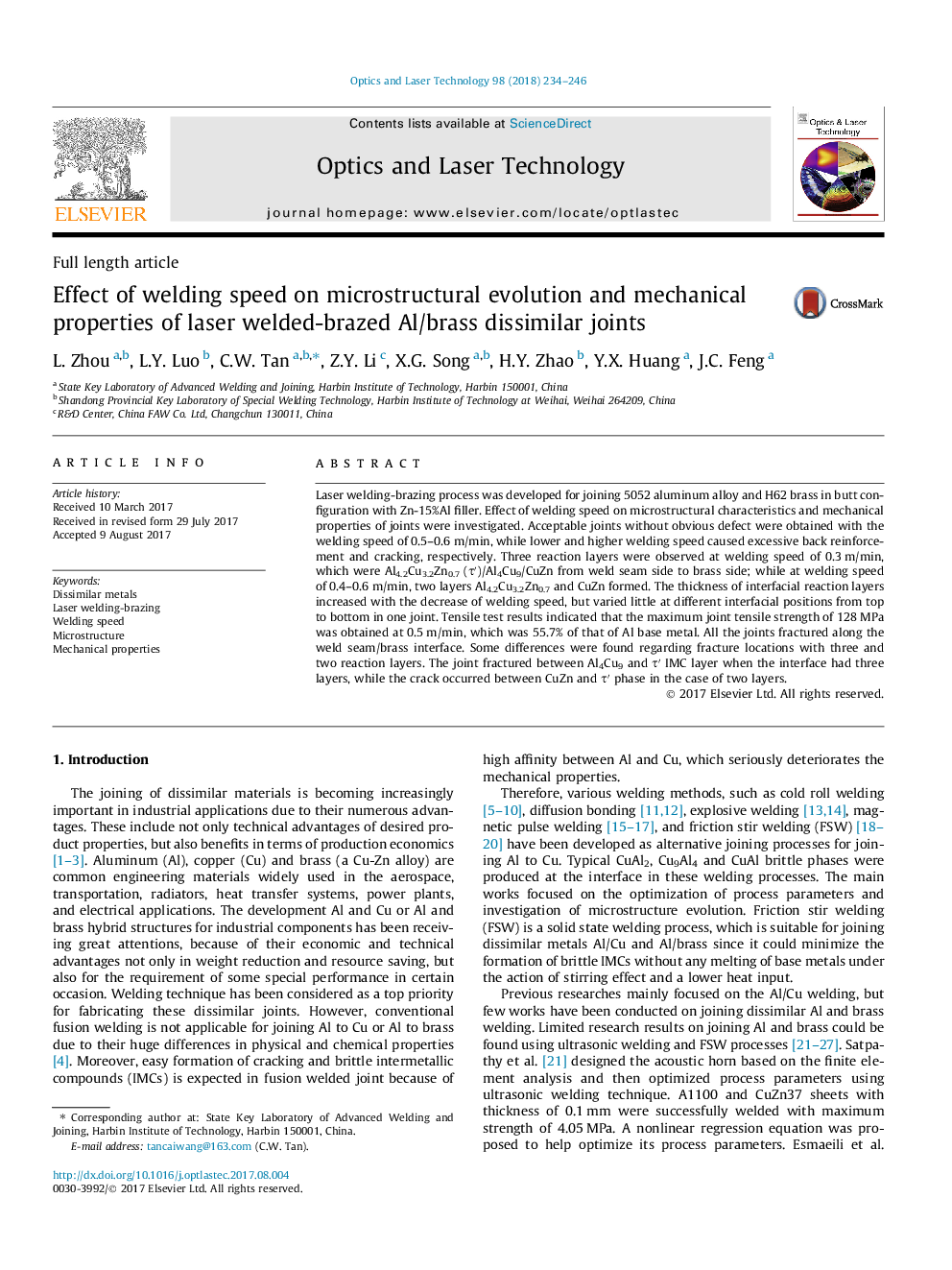| Article ID | Journal | Published Year | Pages | File Type |
|---|---|---|---|---|
| 5007358 | Optics & Laser Technology | 2018 | 13 Pages |
Abstract
Laser welding-brazing process was developed for joining 5052 aluminum alloy and H62 brass in butt configuration with Zn-15%Al filler. Effect of welding speed on microstructural characteristics and mechanical properties of joints were investigated. Acceptable joints without obvious defect were obtained with the welding speed of 0.5-0.6Â m/min, while lower and higher welding speed caused excessive back reinforcement and cracking, respectively. Three reaction layers were observed at welding speed of 0.3Â m/min, which were Al4.2Cu3.2Zn0.7 (Ïâ²)/Al4Cu9/CuZn from weld seam side to brass side; while at welding speed of 0.4-0.6Â m/min, two layers Al4.2Cu3.2Zn0.7 and CuZn formed. The thickness of interfacial reaction layers increased with the decrease of welding speed, but varied little at different interfacial positions from top to bottom in one joint. Tensile test results indicated that the maximum joint tensile strength of 128Â MPa was obtained at 0.5Â m/min, which was 55.7% of that of Al base metal. All the joints fractured along the weld seam/brass interface. Some differences were found regarding fracture locations with three and two reaction layers. The joint fractured between Al4Cu9 and Ïâ² IMC layer when the interface had three layers, while the crack occurred between CuZn and Ïâ² phase in the case of two layers.
Related Topics
Physical Sciences and Engineering
Engineering
Electrical and Electronic Engineering
Authors
L. Zhou, L.Y. Luo, C.W. Tan, Z.Y. Li, X.G. Song, H.Y. Zhao, Y.X. Huang, J.C. Feng,
